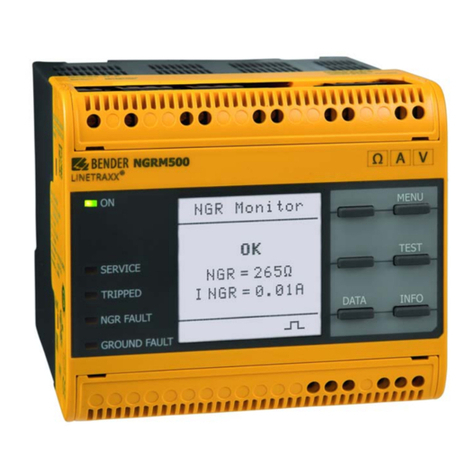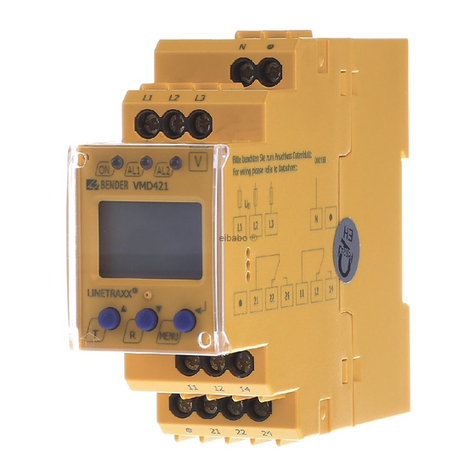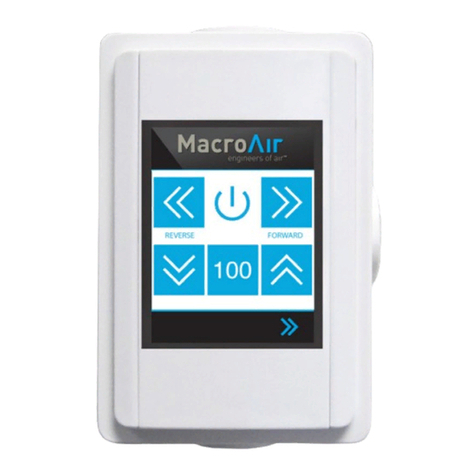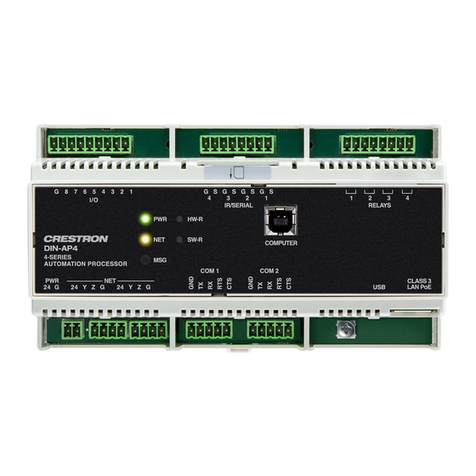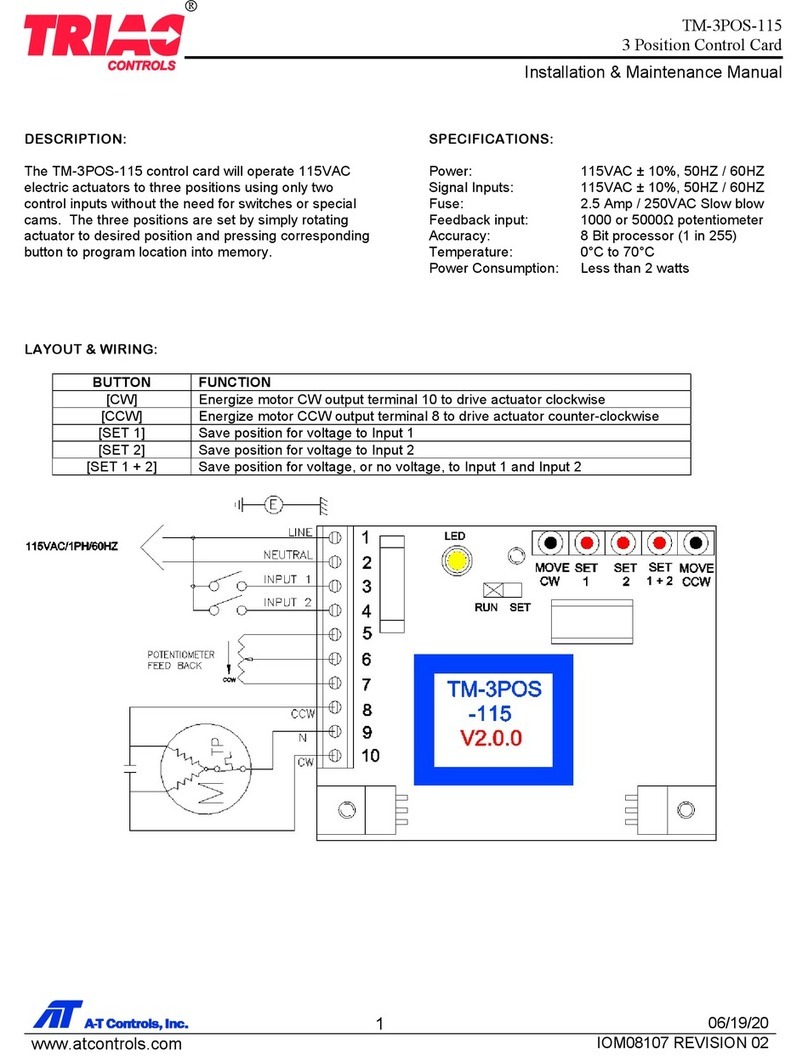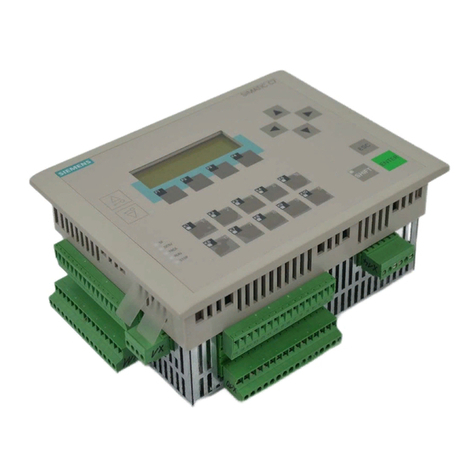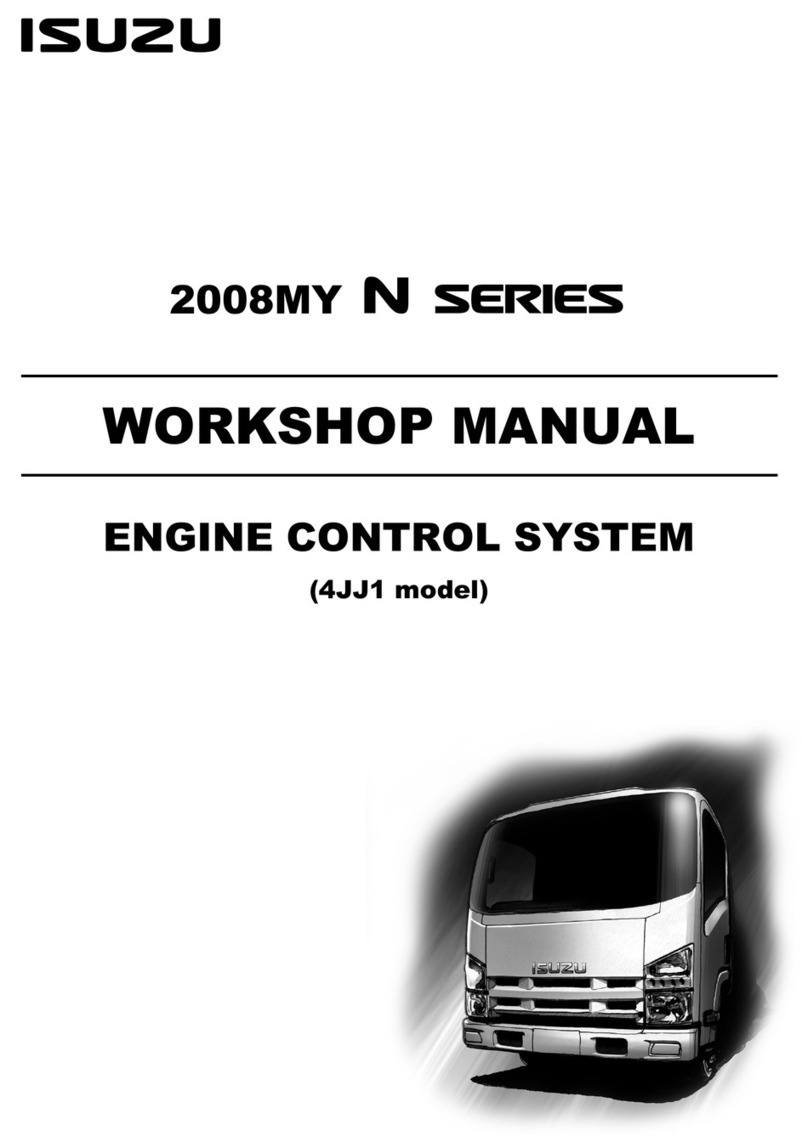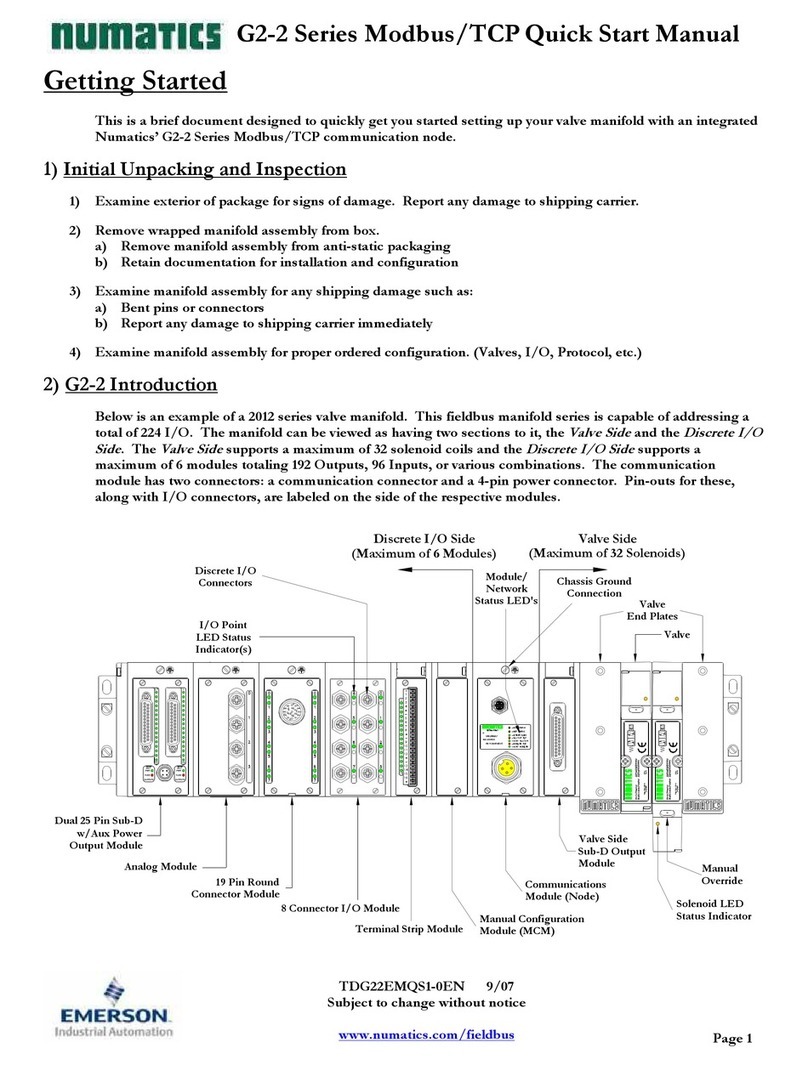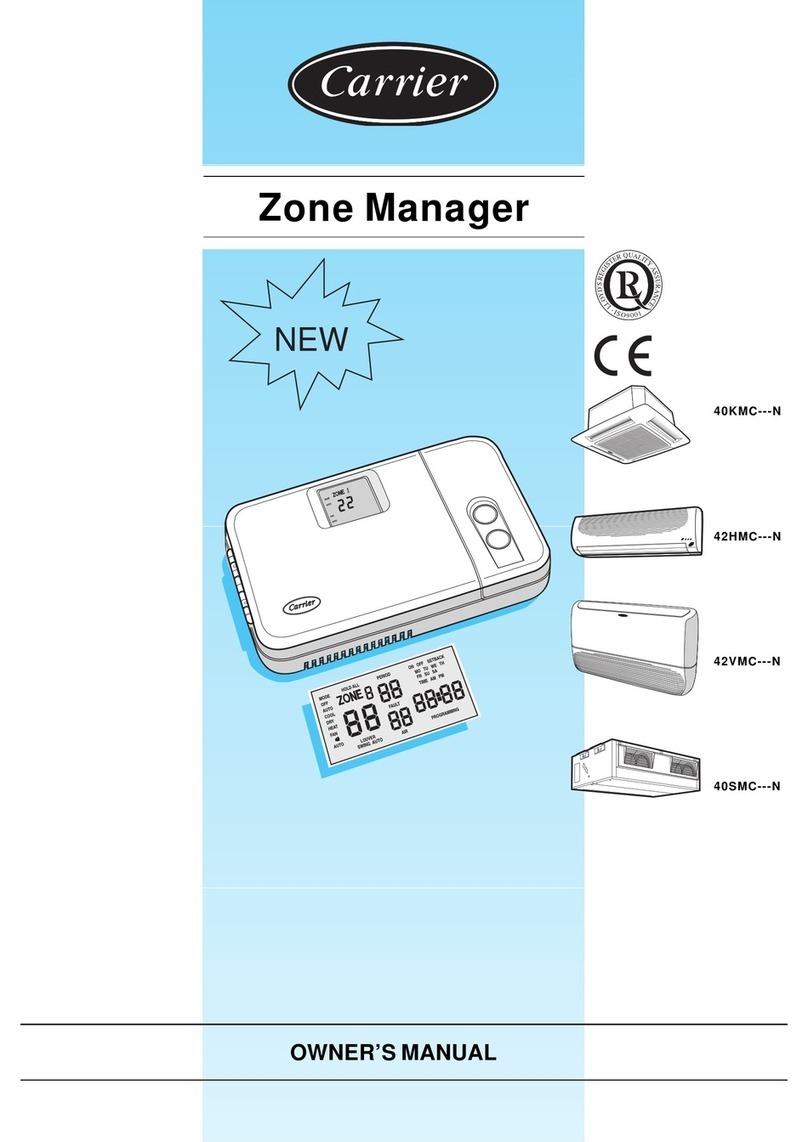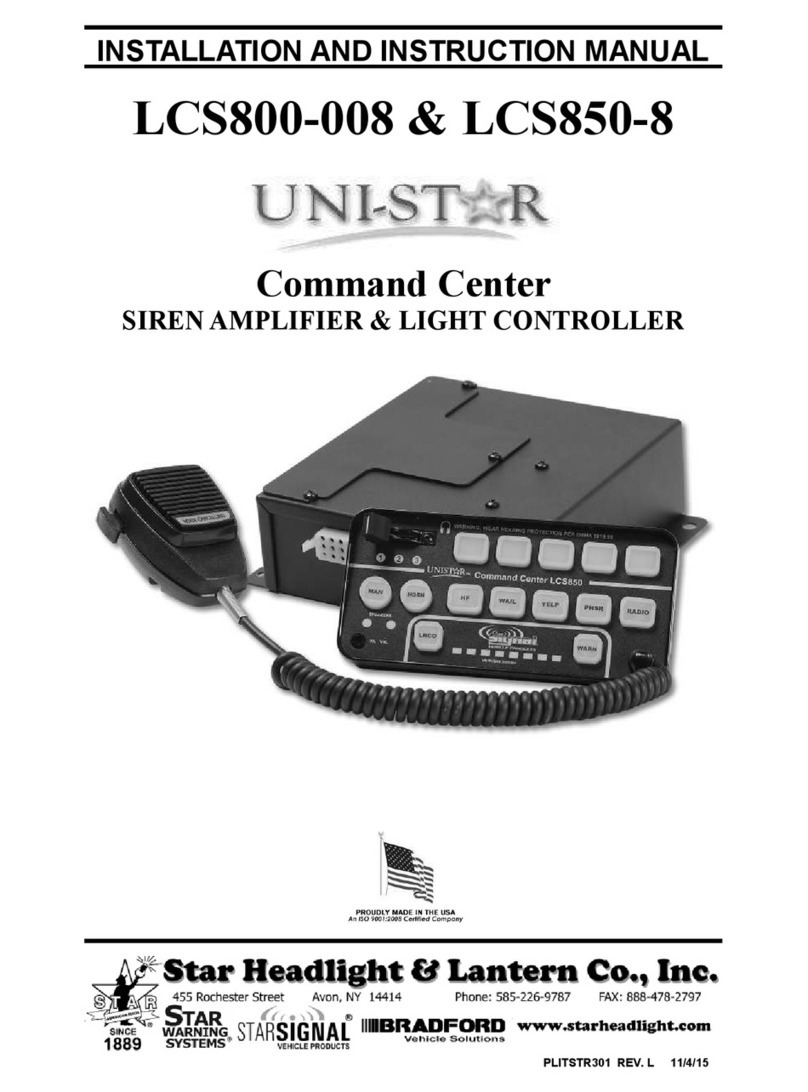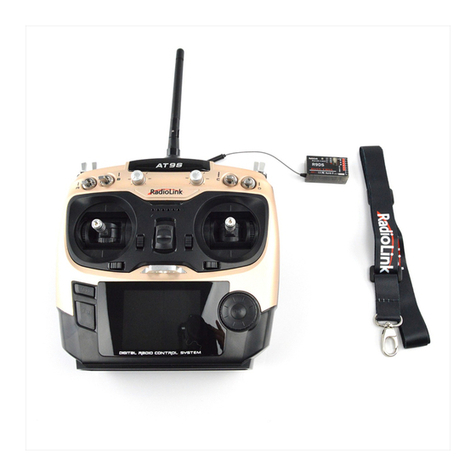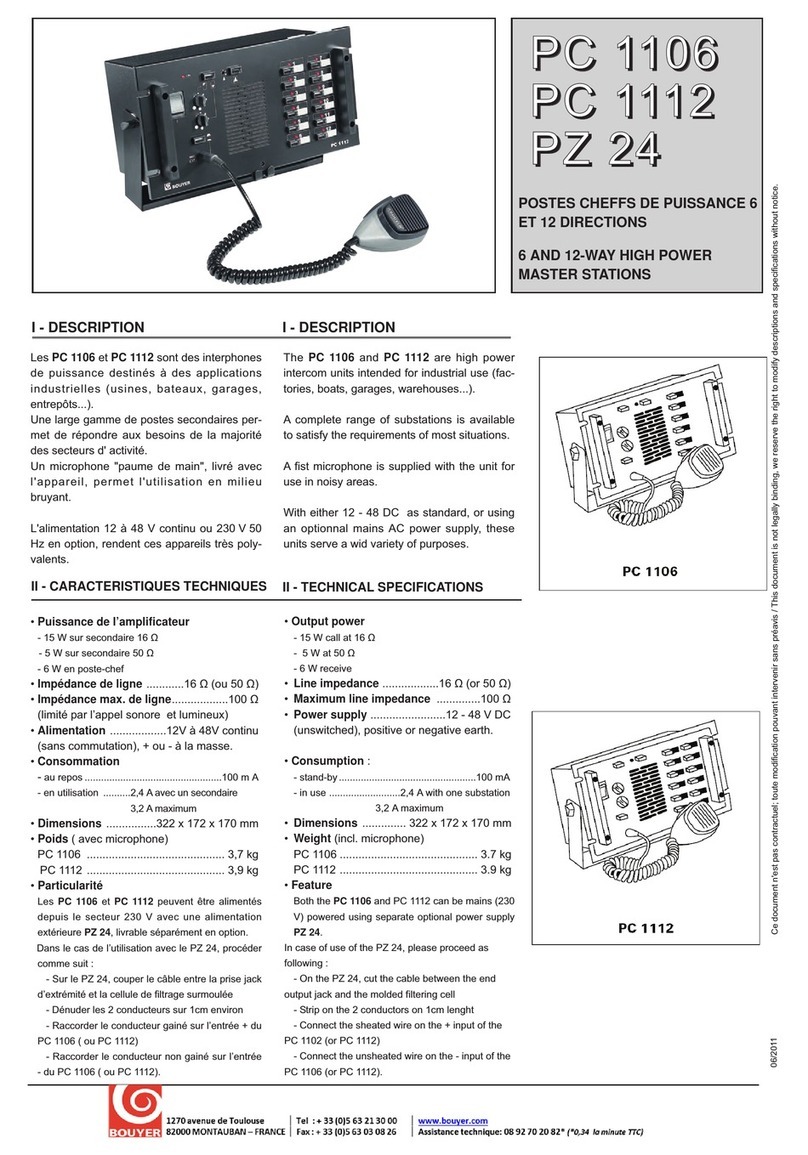Bender VMD420 User manual

T M
Document NAE1038020 • 10.2012 • © Bender Inc. • Page 1/1 • Side 1/2Bender Inc. • USA: 800.356.4266 / 610.383.9200 / info@bender.org • Canada: 800.243.2438 / 905.602.9990 / [email protected] • www.bender.org
VMD420
Installation Bulletin / Reference Guide
This document is intended as a reference guide for installing and using a BENDER VMD420 three-
phase voltage and frequency monitor. This document includes installation, setup, and usage instruc-
tions. For complete details, including installation, setup, settings, and troubleshooting, refer to the
VMD420 user manual, document number TGH1396en. This document is intended as a supplement
and not a replacement to the complete user manual.
Only qualied maintenance personnel shall operate or service this equipment. These instructions
should not be viewed as sucient for those who are not otherwise qualied to operate or service this
equipment. This document is intended to provide accurate information only. No responsibility is as-
sumed by BENDER for any consequences arising from use of this document.
Installation
Mounting
VMD420 series devices may be DIN rail mounted, or screw mounted using the black clips lo-
cated on the top and bottom of the device. Screw mounting requires an extra black clip (article
number B98060008, sold separately).
!DANGER
• Disconnect all power before servicing.
• Observe all local, state, and national
codes, standards, and regulations.
HAZARD OF ELECTRIC SHOCK,
EXPLOSION, OR ARC FLASH
Wiring - General
Refer to gure 1 for wiring the VMD420. Use minimum
AWG 24, maximum AWG 12 size wire. Refer to VMD420
series user manual for complete technical details.
1. External supply voltage; 5A fuse
required for internal device pro-
tection
2. System connections (N connec-
tion is only necessary when N is
being used)
3. Alarm relay K1: SPDT contact
4. Alarm relay K2: SPDT contact
Figure 1 - VMD420 wiring diagram
Front Panel Display
1. LED “ON” (green): Illuminates when
power is applied to the device. Flashes
when the CT connection alarm is active.
2. LED “AL1” (yellow): Illuminates when
the prealarm is activated. Flashes when
the CT connection alarm is active.
3. LED “AL2” (yellow): Illuminates when
the main alarm is activated. Flashes
when the CT connection alarm is active.
4. Backlit LCD display
5. TEST / UP button: Activates self-test /
scrolls up inside main menu.
6. RESET / DOWN button: Resets device /
scrolls down inside main menu.
7. MENU / ENTER button: Activates main
menu / Confirms (momuntary push) or
goes back a step (held > 1.5 s) inside
main menu.
1 2 3
4
5 6 7
Figure 2 - VMD420 front display
1
2
3
4
Menu Flow Chart for Common Settings
Figure 4 through gure 8 on the reverse side of this document contain ow charts for modify-
ing commonly used features and settings in the VMD420’s main menu. Not all available fea-
tures are listed in this document. For more information, consult the VMD420 user manual.
R
T
Menu Legend
MENU / ENTER button
DOWN ARROW button
UP ARROW button
Momuntary button push
< 1.5 s
Hold button for at least 1.5 s,
then release
> 1.5 s
Wiring - Contacts
Using a normally closed or normally open contact utilizes two factors: wiring out of the proper
terminal, and setting the respective contact to normally energized or deenergized operation.
Refer to the chart below for relay conditions. For changing the energized state of the contact,
refer to “Figure 7 - Contact operation” on the reverse side of this document.
The factory default for the VMD420 is normally energized operation for relay K2, and normally
deenergized operation for relay K1.
Dimensions
Dimensions in inches (mm).
1.42” (36)
2.78”
(70.5)
1.87”
(47.5)
1.22” (31.1)
2.66” (67.5)
1.77” (45)
3.54” (90)
Normally energized mode (N/E)
Failsafe mode
“N/C”in device settings menu
Energized in the normal state
Relay will switch when the alarm is
activated, or when supply voltage
to the device is lost.
Power ON, normal state (no alarms)
Power OFF
Power ON, alarm state
11-12 OPEN
11-14 CLOSED
11-12 CLOSED
11-14 OPEN
11-12 CLOSED
11-14 OPEN
21-22 OPEN
21-24 CLOSED
21-22 CLOSED
21-24 OPEN
21-22 CLOSED
21-24 OPEN
Normally deenergized mode (N/D)
Non-failsafe mode
“N/O”in device settings menu
Energized in the alarm state
Relay will switch when the alarm is
activated.
Power ON, normal state (no alarms)
Power OFF
Power ON, alarm state
11-12 CLOSED
11-14 OPEN
11-12 CLOSED
11-14 OPEN
11-12 OPEN
11-14 CLOSED
21-22 CLOSED
21-24 OPEN
21-22 CLOSED
21-24 OPEN
21-22 OPEN
21-24 CLOSED
Relay Operation Setting Device Alarm State K1 STATE K2 STATE
Device Relay Conditions

T M
Document NAE1038020 • 10.2012 • © Bender Inc. • Page 1/1 • Side 2/2Bender Inc. • USA: 800.356.4266 / 610.383.9200 / info@bender.org • Canada: 800.243.2438 / 905.602.9990 / [email protected] • www.bender.org
VMD420
Installation Bulletin / Reference Guide
Figure 5 - Changing Time Delays
Four separate time delays are available:
• ton1 - Response delay, prewarning
• ton2 - Response delay, main alarm
• t - Startup delay
• toff - Delay on release
= Flashing Symbol
T R
ton1 Adjustment
0...10 seconds
> 1.5 sec
< 1.5 sec
< 1.5 sec
< 1.5 sec
R
Press:
1 x for ton2
2 x for t
0...10 sec
3 x for toff
0...99 sec
OR
R
Press Twice
> 1.5 sec
> 1.5 sec
Figure 6 - Latching behavior (fault memory)
Changing this setting to “ON” will cause the VMD420 to latch in the event of an alarm, and
require a manual reset if the alarm clears. Changing this setting to“OFF”will cause the VMD420
to automatically reset if the alarm clears.
= Flashing Symbol
T R
> 1.5 sec
Press Once
Fault Memory
ON/OFF Select
> 1.5 sec
> 1.5 sec
< 1.5 sec
< 1.5 sec
< 1.5 sec
R
= Flashing Symbol
T R
Failsafe
ON/OFF Select
> 1.5 sec
Press Once
R
Press Once
R
> 1.5 sec
> 1.5 sec
< 1.5 sec
< 1.5 sec
< 1.5 sec
Figure 7 - Contact operation
Use this option to change the behavior of the contacts between normally deenergized (non-
failsafe) mode and normally energized (failsafe) mode. The two SPDT contacts may be changed
individually. Note that the VMD420 labels normally deenergized operation as “N/O” and nor-
mally energized operation as “N/C”; utilzing a normally open or normally closed contact only
depends on which contact output is wired.
= Flashing Symbol
> 1.5 sec
< 1.5 sec
< 1.5 sec
Press nothing for
undervoltage (<)
6 ... 300 V
otherwise:
R
1x for overvoltage (>)
6 ... 300 V
3x for asymmetry
5 ... 30%
4x for underfrequency
10 ... 500 Hz
5x for underfrequency
10 ... 500 Hz
7x for phase sequence
ON / OFF
< 1.5 sec
T R
Setpoint Adjustment
< 1.5 sec
> 1.5 sec
To quit
R
OR
To repeat
for more
alarms
x 2
Figure 4 - Setting alarm trip values
The VMD420 may be set to trip on undervoltage, overvoltage, overfrequency, underfrequency,
asymmetry, or phase sequence. Any combination of these alarms may be set. Use the chart
below for conguring trip values. Repeat or skip steps for the types of alarms you would like
to use. Actual enabling and disabling of alarms may be congured using “Figure 8 - Relay Con-
guration.”
Figure 8 - Relay Configuration
The two relay contacts K1 and K2 may be congured to trip on any combination of alarm
types. For example, K1 may be set to overvoltage and overfrequency, and K2 may be set to
undervoltage and underfrequency. For each contact, each alarm type is turned on or o. The
factory default is set to undervoltage only for K2, and overvoltage only for K1.
= Flashing Symbol
T R
ON/OFF Select
> 1.5 sec
Press Once
R
Press 3x
R
< 1.5 sec
< 1.5 sec
< 1.5 sec
Press nothing for
Device error (Err)
otherwise:
R
1x for undervoltage (< U)
2x for overvoltage (> U)
3x for asymmetry (Asy)
4x for underfrequency (< Hz)
5x for underfrequency (> Hz)
6x for phase sequence (Phs)
< 1.5 sec
> 1.5 sec
To quit
R
OR
To repeat
for more
alarms
> 1.5 sec
To quit
R
OR
To repeat
for relay 2
x 2
Technical Data
Refer to VMD420 series user manual (document TGH1396en) or VMD420 series datasheet (doc-
ument NAE1032010) for detailed technical information.
Other manuals for VMD420
2
Other Bender Control System manuals
Popular Control System manuals by other brands
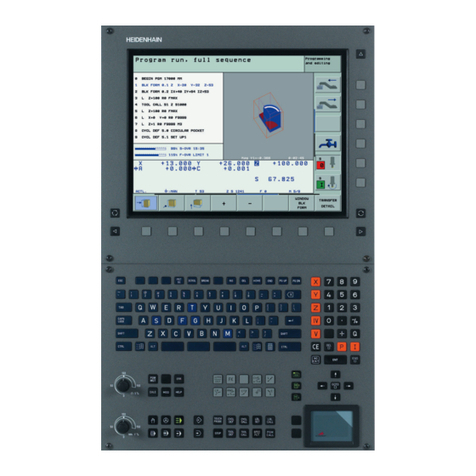
HEIDENHAIN
HEIDENHAIN ITNC 530 - CONVERSATIONAL PROGRAMMING Service manual

Siemens
Siemens SIMATIC HMI ITC1500 V3 PRO Quick install guide
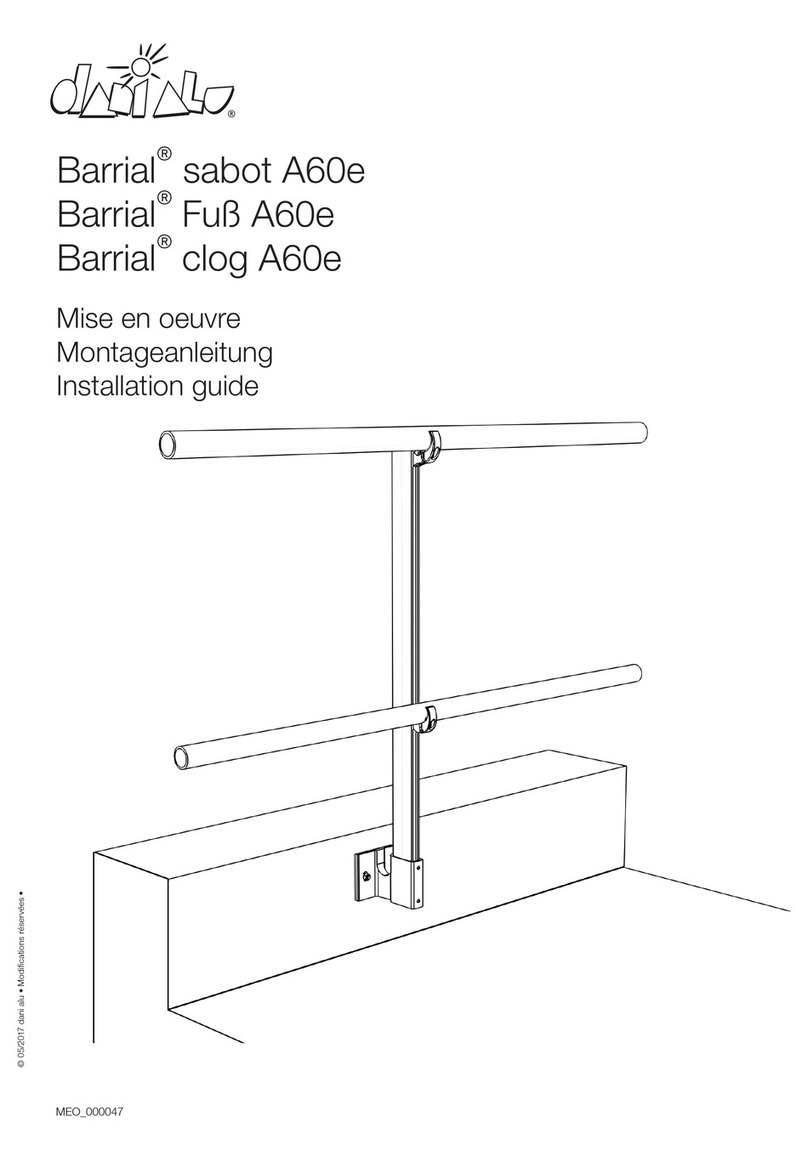
dani alu
dani alu Barrial A60e installation guide
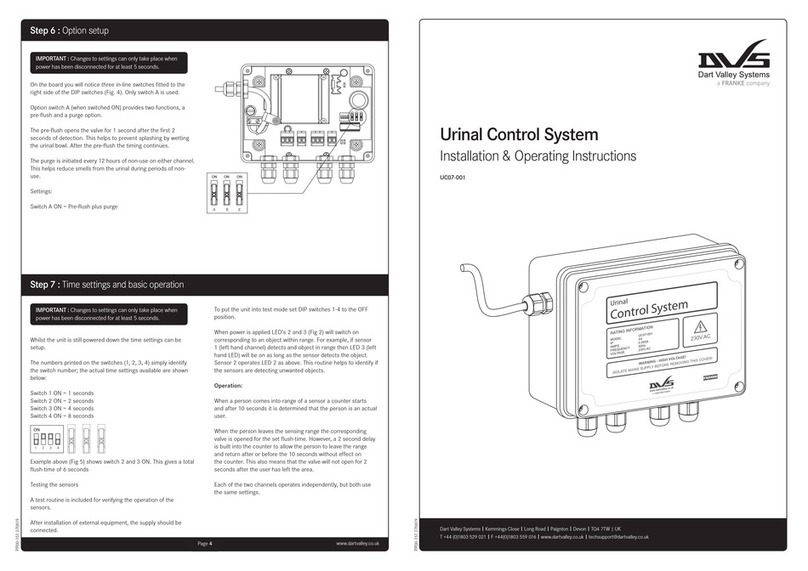
Franke
Franke DVS UC07-001 Installation & operating instructions
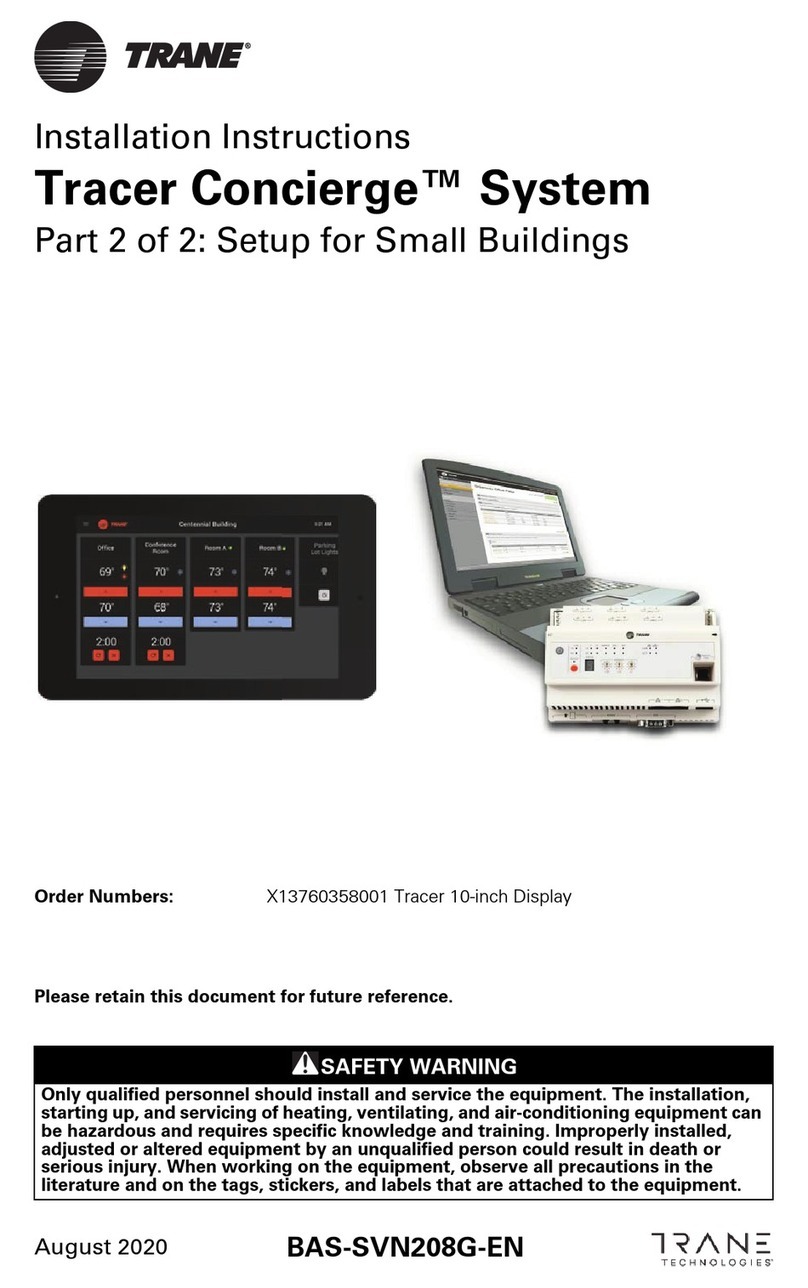
Trane
Trane Tracer Concierge installation instructions

Viking spas
Viking spas spaTouch BP Series owner's manual

